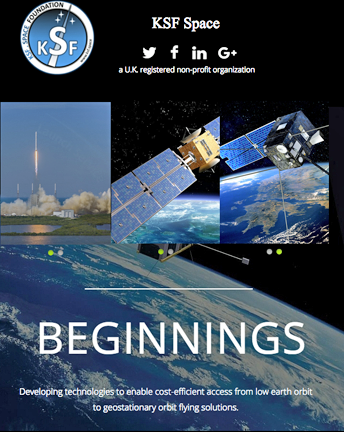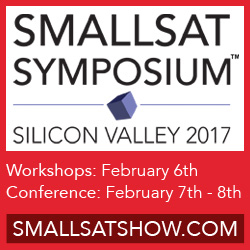
KSF Space has announced their ability to help universities and academic aerospace, engineering and telecommunication departments to train students on how to construct and build smallsat (cubesat) Ground Segments (GS) in order to track missions, such as the QB50 initiative.
QB50 is a proposed international network of 50 cubesats for multi-point, in-situ measurements in the lower thermosphere (90–350 km) and re-entry research. QB50 is an initiative of the Von Karman Institute and is funded by the European Commission as part of the 7th Framework Program (FP7).
Double-unit (2U) cubesats (10×10×20 cm) are developed, with one unit (the 'functional' unit) providing the usual satellite functions and the other unit (the 'science' unit) accommodating a set of standardized sensors for lower thermosphere and re-entry research. Thirty-five cubesats are envisaged to be provided by universities in 19 European countries, ten by universities in the US, two by universities in Canada, three by Japanese universities, one by an institute in Brazil, and others. Ten 2U or 3U cubesats are foreseen to serve for on orbit technology demonstrations of new space technologies.
KSF Space also recently announced the creation of the world’s first Nano-Satellite Engineering Professional Certification “NEP Certificate.” The NEP Certification pathway will validate the training and experience of aerospace engineers and experts and will be recognized by major space companies, organizations, foundations and agencies. Some of the industry partners will work with KSF Space to review the content of the course material and accredit the certificate by recognizing NEP Certification as world’s first and only smallsat specialization and training credential.
 The KSF Space was initially founded to enable cost-effective access to LEO and GEO with zero-environmental impact flying solutions. The foundation offers access to near-space and LEO for research and scientific experiments in many fields, such as Earth or Space Observation, biological testing, satellite positioning detection, Earth magnetic field measurement, radio transmit, atmosphere science and technology experiment. The foundation encourage universities to develop R&D missions using small sats as these tiny spacecraft have become one of the most important elements in developing future scientific space missions.
The KSF Space was initially founded to enable cost-effective access to LEO and GEO with zero-environmental impact flying solutions. The foundation offers access to near-space and LEO for research and scientific experiments in many fields, such as Earth or Space Observation, biological testing, satellite positioning detection, Earth magnetic field measurement, radio transmit, atmosphere science and technology experiment. The foundation encourage universities to develop R&D missions using small sats as these tiny spacecraft have become one of the most important elements in developing future scientific space missions.

